
Why Remote Technical Assistance Matters More Than Ever
As businesses across the US and UK shift toward digital-first operations, remote technical assistance is emerging as a mission-critical solution. Whether it’s resolving IT issues, managing cloud systems, or supporting cybersecurity, companies are increasingly relying on virtual tech professionals to keep operations seamless. The pandemic accelerated this shift, but the demand has persisted because of cost-efficiency, 24/7 availability, and expert scalability.
The global remote support software market was valued at $3.62 billion in 2021 and is expected to reach $9.25 billion by 2027, growing at a CAGR of 15.8%. This reflects how essential remote tech assistance has become—not just for large enterprises but for small and medium-sized businesses as well.
The Rise of Remote Work and Its Impact on Technical Support
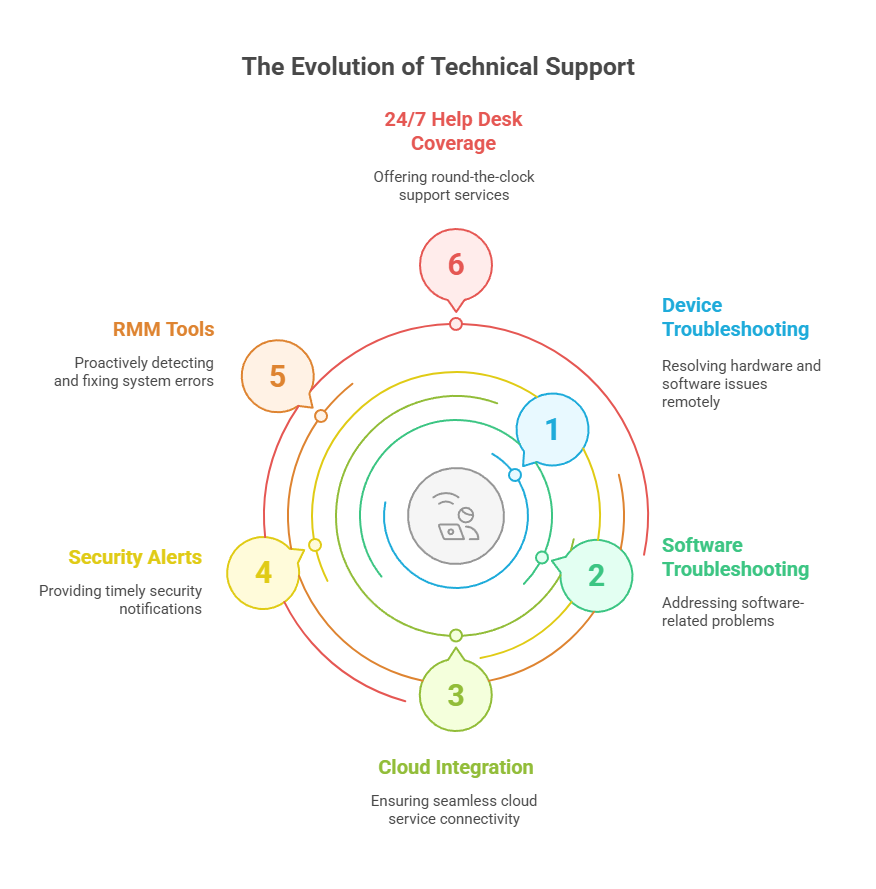
In both the US and UK, the hybrid and remote work revolution has reshaped how businesses operate. 85% of companies now support remote or hybrid models, which has led to a 45% increase in remote troubleshooting requests across sectors. With employees working from diverse locations and across different time zones, traditional on-site IT support is no longer sufficient.
Remote technical assistance provides real-time solutions for device issues, software troubleshooting, cloud integration, and security alerts. For example, Remote Monitoring & Management (RMM) tools can proactively detect and fix system errors, reducing downtime by up to 40%. Companies can also benefit from 24/7 help desk coverage without needing to staff full-time local support teams.
AI and Automation: Revolutionizing Remote Technical Assistance
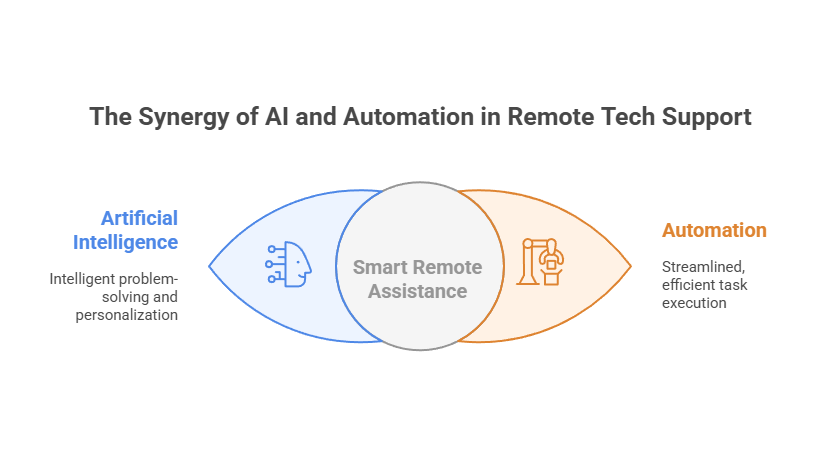
The integration of AI and automation tools into remote tech support is a game-changer. Approximately 63% of IT professionals say that AI allows them to resolve issues faster, and 40% of Tier-1 IT tickets are now handled by AI-powered chatbots or automated systems.
With tools like predictive analytics and automated ticketing, remote teams can anticipate and prevent failures. In fact, predictive systems can prevent up to 22% of system crashes before they happen, saving valuable time and money. AI doesn’t just improve response time—it increases accuracy and personalization, allowing businesses to offer better support at scale.
The Security Imperative in Remote Support
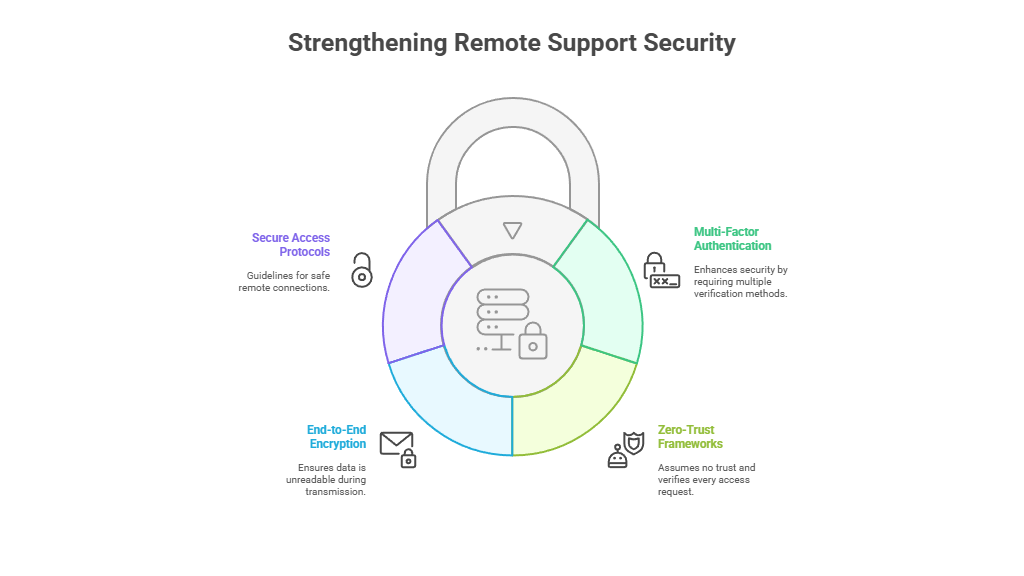
As reliance on remote technical support grows, so does the need for robust cybersecurity. Remote environments are inherently more vulnerable to threats, especially when handling sensitive data or proprietary systems. To mitigate risks, businesses are adopting security practices such as multi-factor authentication (MFA), zero-trust frameworks, and end-to-end encryption.
The UK’s National Cyber Security Centre (NCSC) and the US’s Cybersecurity and Infrastructure Security Agency (CISA) both recommend secure remote access protocols for all virtual support systems. These practices are particularly important for industries like healthcare, finance, and legal services, where data breaches can lead to regulatory penalties.
Industry-Specific Use Cases and Benefits
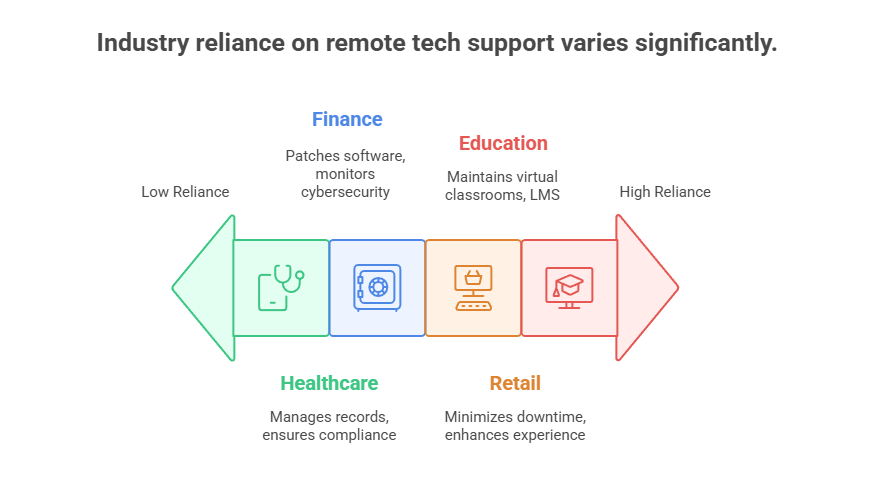
Remote technical assistance is not a one-size-fits-all solution. In fact, its implementation varies significantly by industry:
1. Healthcare:
Hospitals in the UK and US use remote IT services to manage electronic health records and ensure compliance with data privacy laws like HIPAA and GDPR.
2. Finance:
Banks rely on remote tech specialists for software patches, ATM management, and cybersecurity monitoring.
3. Retail and E-Commerce:
With POS systems and customer portals relying heavily on tech infrastructure, retailers outsource support to minimize downtime and enhance customer experience.
4. Education:
Institutions providing hybrid learning depend on remote assistance to maintain virtual classrooms, learning management systems (LMS), and video conferencing tools.
For small businesses, outsourcing remote tech support can save up to 60% in IT costs annually, compared to maintaining an in-house team.
Cost-Efficiency and Scalability for SMEs
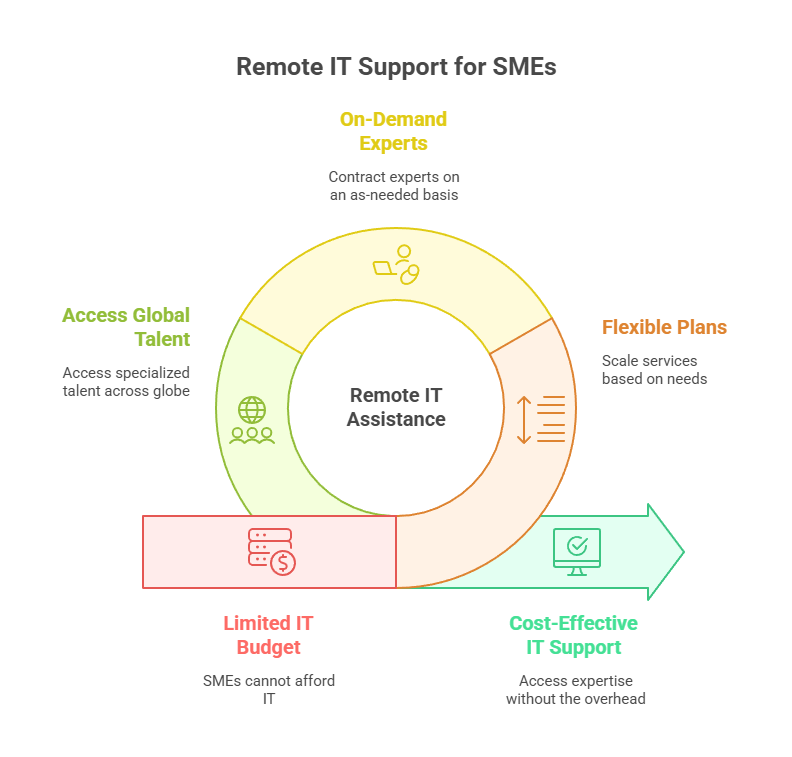
Small and mid-sized enterprises (SMEs) across the US and UK often struggle to afford full-time, in-house IT support. Remote technical assistance offers them access to enterprise-level expertise without the overhead. Through flexible plans, SMEs can scale services up or down based on seasonal needs or growth cycles.
Unlike salaried employees, remote IT professionals can be contracted on an as-needed basis, from basic help desk roles to complex cloud migrations. This model also allows companies to access specialized talent across global markets, something especially valuable in tight labor environments.
How TaskVirtual Enhances Remote Technical Assistance
When it comes to reliable and affordable virtual tech support, TaskVirtual stands out as a trusted partner for businesses in the US and UK.
Here’s how TaskVirtual contributes to exceptional remote technical assistance:
1. Expert Consultation on AI-Powered Solutions:
TaskVirtual provides strategic guidance on leveraging AI for smarter support workflows, chatbot implementation, and automated monitoring.
2. Affordable Pricing:
Services start as low as $3.12/hour, scaling up to $14.99/hour depending on the complexity of the task.
3. Proven Reliability:
With 364 positive reviews and a 4.7-star rating on leading VA platforms, TaskVirtual consistently delivers top-tier support services.
4. Comprehensive Technical Services:
From software installations and malware removal to server maintenance and backup solutions, their virtual assistants are trained across a broad IT spectrum.
5. Global Availability:
Their support agents operate across time zones, ensuring true 24/7 availability for businesses operating in multiple regions.
By partnering with TaskVirtual, businesses can avoid costly downtime, improve response times, and scale support with minimal investment.
Future Trends: What’s Next for Remote Tech Assistance?
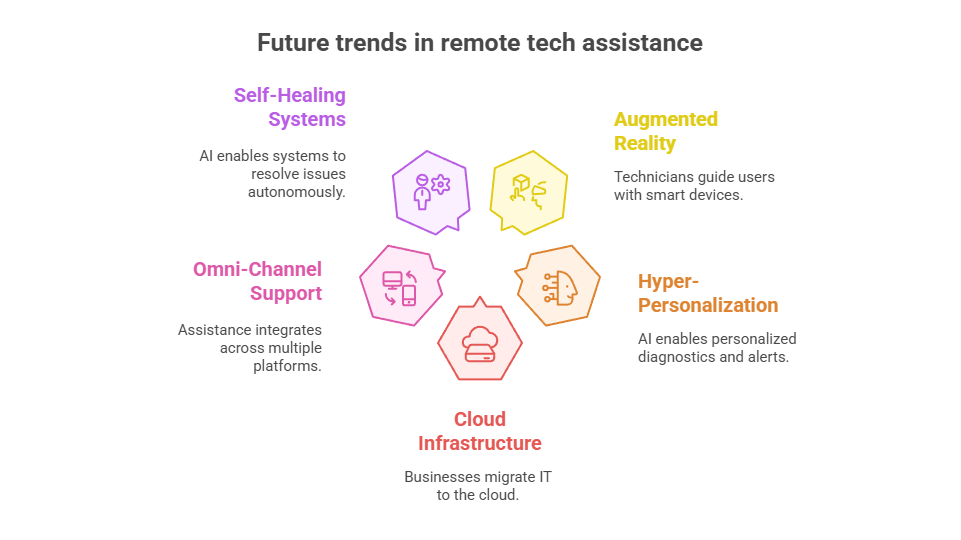
As we move into 2025 and beyond, several trends will shape the future of remote technical assistance:
1. Augmented Reality (AR):
AR-assisted support allows technicians to guide users through physical repairs via smart devices.
2. Hyper-Personalization:
AI will enable personalized diagnostics and proactive system alerts.
3. Cloud-First Infrastructure:
More businesses will migrate entire IT ecosystems to the cloud, increasing the need for remote management tools.
4. Omni-Channel Support:
Remote assistance will integrate seamlessly across platforms like Slack, Teams, Zoom, and social media.
5. Self-Healing Systems:
Predictive AI will increasingly enable systems to resolve issues autonomously without user intervention.
These trends point toward an even more efficient, secure, and scalable remote support ecosystem—one that is embedded directly into business operations.
Conclusion
Remote technical assistance is no longer a reactive service—it’s a proactive business enabler. Whether you’re a startup looking to scale affordably or an enterprise seeking round-the-clock IT reliability, remote support is essential for modern digital infrastructure. With the right partner like TaskVirtual, businesses in the US and UK can access high-quality tech assistance without the overhead of in-house teams.
As the landscape continues to evolve, adopting remote support today is not just smart—it’s strategic.






